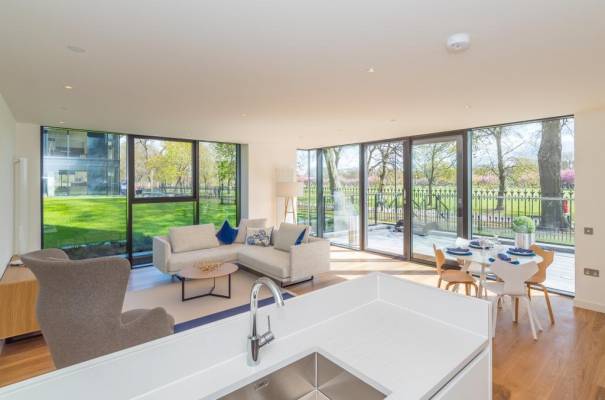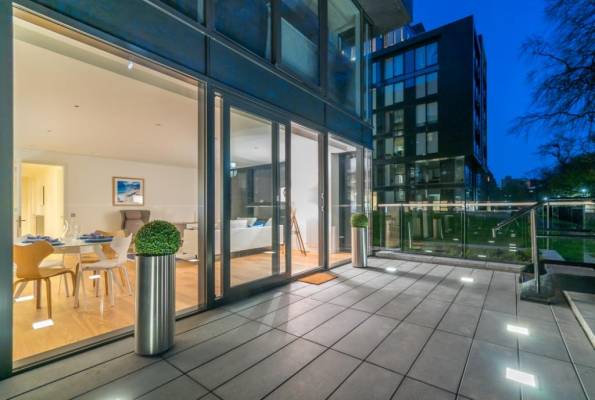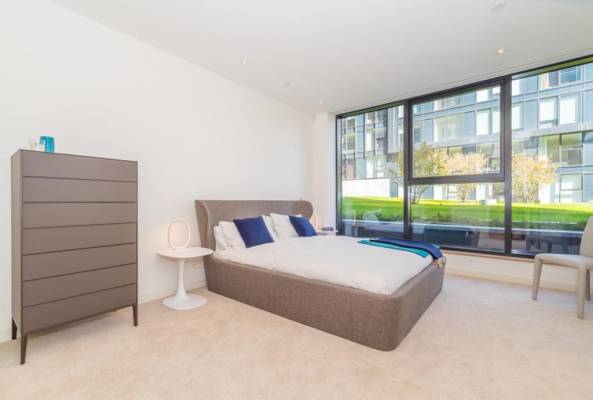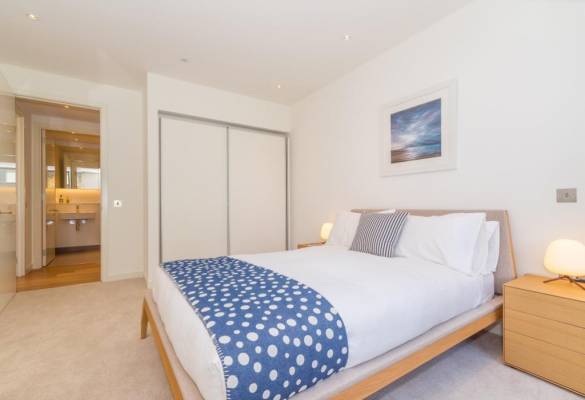
Apartment living: the evolution of urban housing

City living is getting more popular. Over half of the world’s population now live in built up areas and at current rate of growth, research shows shows that by 2050 70% of people on Earth will live in urban areas.
In cities like Edinburgh, the lure of better-paid jobs, higher standards of living, a wealth of amenities and recreational facilities can be hard to resist. And with desirable new developments like Quartermile on offer, making the move to a city apartment has never been so appealing.
But how did we get to this point? How has housing changed over the centuries and what is it about the big city that we just can’t get enough of?
A changing way of life
Over the centuries, the way we live and the rooms and buildings we call home have changed dramatically. From the types of material we use to build our houses to the technologies we use to heat, plumb and power our homes, it is safe to say that things have come a long way.
Housing design and location have been informed by the needs of individuals and communities. But it is also fair to say that progress in architecture, layout, interior design and layout has also helped to shape family and social relationships.
Once upon a time, the home was a place to cultivate crops, rear livestock and ensure survival through self sufficiency. Today, our developed societies enable us to access food, running water and energy almost anywhere we like. This has enabled the home to become a place of comfort and relaxation, rather than a functional abode.
This is not to say that location is no longer important, however. Even in the modern world where transport links allow vast distances to be covered quickly, many people still choose to live within easy reach of their place of work. In the 21st century, the location of desirable residential real estate often lies on mixed-use city districts.
Mixed-use space
Throughout the Industrial Revolution the use of residential and commercial spaces was very clearly defined. The construction of blocks of houses in a dedicated, nuclear space became the norm through much of the 19th and early 20th century. However, things began to change in the post-war era as transport improved and the need to be located within walking distance of factories became less important. Instead, people developed the freedom to live near to the amenities and attractions that appealed to them. In urban areas, this manifested itself in the development of mixed-use spaces.
Today, offices, retail space and residential communities all share districts, enabling people to live, eat, work and play in a close proximity. This can be seen at Quartermile quite clearly, where modern house buyers benefit from cafes, restaurants and gyms within a development that also features global businesses and organisations. Of course, Quartermile also benefits from having the green expanse of The Meadows on its doorstep!
Edinburgh through the ages
Back in the 18th century, Edinburgh was far from the grand, expansive city we see today. With 35,000 people packed into a space that was focused around the single street running from Edinburgh Castle to Holyrood palace, it was characterised by tenement dwellings.
Although they were a far cry from the luxury apartments now available in the capital, these early high-rise properties were home to thousands of people who both lived together and worked together in the factories. It was a similar story a few miles north at the port of Leith where the community were devoted to a working life focused around the trade and fishing.
It was in the mid-18th century that Edinburgh’s New Town flourished, developing into a district for the wealthy to live and spend their money. Many Scottish noblemen had long since decamped and moved to London, but with the New Town it was hoped that creating an area of great affluence with fine shops and amenities would attract people back from the South East.
For the majority of people, however, living conditions in urban areas remained poor well into the mid-20th century. Overcrowding was the norm as were problems with sanitation. In particular, many of the issues can be attributed to the population explosion that took place during the Industrial Revolution as migrants descended on Edinburgh seeking work.
Other Scottish cities were experiencing a similar rise in population, too. Glasgow’s population increased from 77,000 to 275,000 in just 40 years, while Dundee’s population also tripled in a similar time period. For those living in these cities, a one room home was the norm. In fact, the average home size in Edinburgh at the time was estimated to be 14ft by 11.5 ft. These tiny spaces could house anywhere between 5 and 15 people.
While the early 20th century saw some improvements, the issue of overcrowding in 1 and 2-room homes didn’t abate until the post-war era. Many of the high-rise buildings that still feature in Scotland today were constructed in the 1950s and 60s. These massive housing estates may seem to be something of an eye sore today, yet they played a major role in allowing people to live more comfortably without being miles from their places of work.
Urban vs suburban
The improvement of infrastructure in and out of cities in the form of improved road and rail networks, along with the rise in levels of car ownership led many to move out into the suburbs during the 20th century. For many families, being able to enjoy greater space become more important than proximity to the hustle and bustle of cities, leading to a growth in the number of large detached and semi-detached houses in leafier and less built-up areas.
Yet, while urban sprawl has been a feature of the late 20th and early 21st century, the popularity of modern urban living has continued to grow. No longer do people choose to purchase homes in the city because they are forced to live within walking distance of a factory or warehouse; instead they choose to enjoy the buzz of a cosmopolitan city such as Edinburgh and can enjoy the same sense of space, luxury and privacy as their suburban counterparts.
Size + beauty
While the modern apartment is closely linked to the high-rise flats of the 1950s and 60s, the architecture of apartment buildings and modern residential developments has changed significantly since the early concrete behemoths.
Today, residences across the globe combine cutting edge techniques and stunning design to make apartment living even more appealing, with better use of space and light.
Quartermile itself was designed by Foster + Partners, the company headed up by world-renowned architect Sir Norman Foster. Having won hundreds of design awards and citations for excellence over nearly half a century, the attention to detail now shown in developing new urban residences shows how far we have come from those early tenements and grid-iron terraced houses.
Ready to make the move to Edinburgh’s most desirable new district? Book your appointment at Quartermile’s luxury new-build apartments this month by calling 0845 000 2525.





